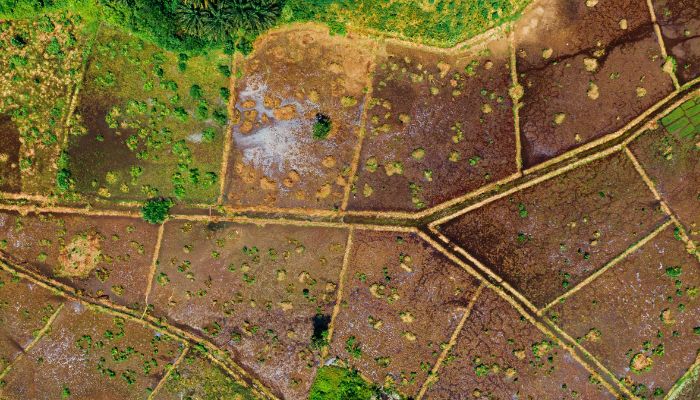
Buying land is becoming more expensive, as the average block size shrinks while the price per square metre shoots up.
Domain’s latest report showed that the average land size in larger capital cities declined 13% in 10 years.
As land sizes reduce, the gap in per-square-metre affordability widens, driven by the increasing demand from the growing population, increasing urban density, and rising income growth.
Domain chief of research and economics Dr Nicola Powell said these trends reflect the housing preferences of Australians to live close to a city or the coast in search of a certain lifestyle, location, and access to key amenities and infrastructures.
“Shrinking block sizes should help to slow the growth in house prices, as the cost of land is the major component in a purchase. However, per square metre, the land cost has not reduced — buyers are just purchasing less of it,” she said.
“As a result, areas with the largest decreases in block size have had growth in price per sqm outpace house price growth at a faster rate, meaning that the true cost to buyers is growing faster than the median house price alone suggests.”
State-by-state affordability
Of all capital cities, Darwin has the most affordable per sqm price and the biggest median land size.
At the other end of the affordability scale is Sydney, where price per sqm is more than $2,400.
In comparison, buyers will find greater value for money in Adelaide, Brisbane, and Perth at around $1200, roughly half the price of Sydney.
In terms of median land size, Perth had the smallest at 503 sqm.
Hobart was once the most affordable across the country, offering the lowest house price and price per sqm in 2017.
Affordability and size rankings of capital cities |
||
|
Median House Price |
Price Per Sqm |
Median Land Size |
|
Darwin, $646,835 |
Darwin, $737 |
Darwin, 806 sqm |
|
Perth, $658,270 |
Hobart, $1,087 |
Canberra, 748 sqm |
|
Hobart, $737,650 |
Adelaide, $1,194 |
Hobart, 655 sqm |
|
Adelaide, $783,705 |
Perth, $1,233 |
Brisbane, 617 sqm |
|
Brisbane, $801,449 |
Brisbane, $1,254 |
Adelaide, 600 sqm |
|
Melbourne, $1,032,903 |
Canberra, $1,517 |
Sydney, 574 sqm |
|
Canberra, $1,095,587 |
Melbourne, $1,811 |
Melbourne, 540 sqm |
|
Sydney, $1,413,658 |
Sydney, $2,466 |
Perth, 503 sqm |
Sydney prices are skyrocketing
Sydney is head and shoulders above other markets in terms of house and land prices.
For one, it is the only capital city where price per sqm is more than $2,000, widening its gap from other capital cities.
In fact, the value gap between Sydney and Melbourne was 19% in 2012. Meanwhile, it was 110% more expensive than the most affordable city at that time, Hobart.
Over the past year, the gap between Sydney and Melbourne has grown to 36%.
Sydney’s gap with the current lowest capital city, Darwin, has widened to 234%.
“Policy change, land release and property tax reform are needed to see a drastic change in price per sqm affordability to improve,” Dr Powell said.
Here are the most expensive suburbs in suburb based on per sqm price:
Most expensive suburbs in Sydney |
|||
|
Suburb |
House price |
Block size (sqm) |
Price per sqm |
|
Paddington |
$3,100,000 |
125 |
$25,755 |
|
Tamarama |
$6,925,000 |
306 |
$25,684 |
|
Darlinghurst |
$2,300,000 |
102 |
$22,623 |
|
Edgecliff |
$3,650,000 |
228 |
$20,551 |
|
McMahons Point |
$3,810,000 |
198 |
$20,448 |
|
Woollahra |
$5,075,000 |
221 |
$20,371 |
|
Surry Hills |
$2,000,000 |
104 |
$20,241 |
|
Balmain East |
$4,850,000 |
209 |
$19,246 |
|
Birchgrove |
$3,015,000 |
170 |
$18,812 |
|
Queens Park |
$3,250,000 |
183 |
$17,655 |
Understanding per sqm affordability
Dr Powell said the price per sqm measure makes it easier for buyers to compare different block sizes geographically, making it a valuable measure to standardise the cost of housing.
“It can be used to compare neighbouring suburbs to identify areas that might offer better value for money and allows you to compare the value of different properties to that of the suburb average,” she said.
“Some cities have a higher median house price where often dollars go further in terms of what you can actually afford while others have neighbouring suburbs with vastly different prices per sqm due to gentrification so it’s worth noting where to look.”
Dr Powell said city fringes seem to offer a much cheaper price per sqm — the trend of jobs moving to commercial hubs in outer areas could make such areas more attractive due to the potential for lower workplace commute times.
“Having multi-region cities will help to distribute wealth across a larger area and provide equal access to education, healthcare, and employment opportunities — this will also help to spread the cost per sqm to be less heavily centred in towards our CBDs,” she said.
—
Photo by KML from Pexels.
